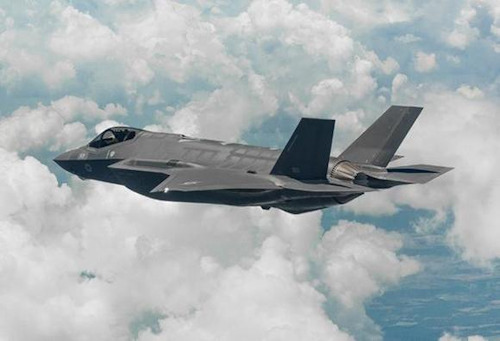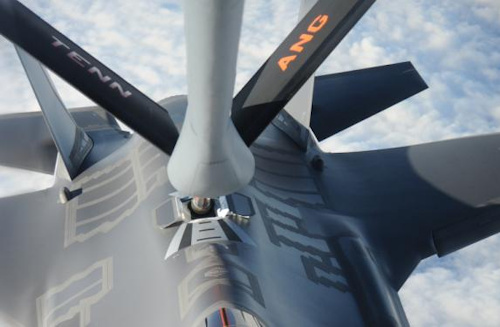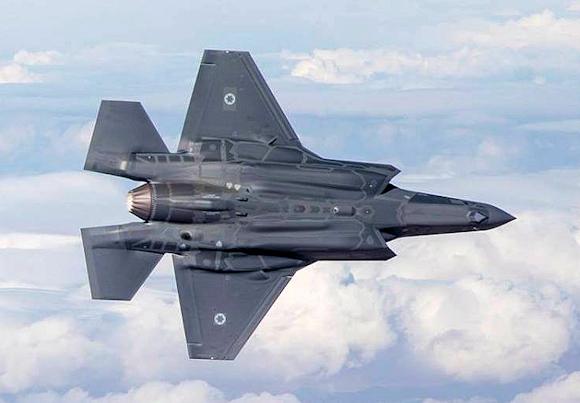The fact happened last year, but the news was leaked only now: F-35 fighter-bombers Adir, of the Israeli air force, flew over Iranian territory several times. The F-35 with the star of David flew over the airspace of cities such as Tehran, Karajrak, Isfahan, Shiraz and Bandar Abbas, without the Iranian air defense intervening.
The spread of this news poses a fundamental question for Middle Eastern geopolitics: can Israel really erase Tehran's nuclear capabilities?
The Iranian nuclear race certainly represents a serious threat - especially after the American withdrawal from the nuclear treaty with Tehran - to the survival of the Israeli state (the perception of danger is different from us Europeans, as we are not surrounded by neighbors who declare openly to want to destroy us).
There is no doubt that, with regard to armaments, the Middle Eastern area has seen the State of Israel in a position of tactical pre-eminence (from the point of view of nuclear power, it seems that it is still the only country, in that theater, to own missiles with thermonuclear warheads).
Situation that has undergone a temporary modification during the 80 years of the last century, when the threat to the Jewish state assumed a significant strategic level, inducing the Israeli government to intervene to stop the nuclear proliferation of Iraq. In fact, in the 1981, eight F-16A fighter-bombers, each armed with two Mk-84 bombs, and six F-15A escort fighters, attacked Osirak's nuclear reactors, effectively eliminating Baghdad's nuclear capabilities.
The 5 fighter generation F-35 Adir it would be the ideal means of deterring Iran in its uranium enrichment projects, with the aim, not so veiled, of producing nuclear weapons.

So, to answer the question posed earlier, Israel has both the motive and the technical capabilities to hit nuclear installations on Iranian territory. The problem would however be of a political nature. Because if it is obvious that the main damage would be Iran it is equally obvious that it would not be the only one.
To conduct an airstrike against enrichment facilities in Iran, various integration options can be analyzed.
The Iraqi option
The formation of Adir it would first cross Syrian airspace (which would certainly not be a problem) - or, less likely, the Jordanian one - to then fly over Iraqi Kurdistan for about 300 km, and then enter Iranian airspace. With this hypothesis two problems would arise: the almost certain rupture of the relations between Shiites and Kurds and the sure fall of the Baghdad Executive, which as is well known uses American forces for its defense. A possible placid asset of Washington, at the crossing of the Iraqi territory, would inflame the whole region, first of all Saudi Arabia. This route appears, therefore, not very practicable by the Heyl Ha'Avir, the Israeli air force.
The Saudi option
In this scenario a formation of Adir it would cross the Saudi airspace flying at very low altitude, trying to avoid both the inhabited centers and the AWACS aircraft (which often patrol the large desert areas between the Red Sea and the Persian Gulf), and then penetrate the Iranian airspace from the Gulf.
This plan would not only not involve Americans but put the Saudi Kingdom in the position of the Arab martyr state of Zionist aggression. Like when, at the end of the 1967 Six-Day War, Egypt, while losing the Sinai peninsula, won the media war against Israel, raising the figure of President Nasser to defend the Arab world.

So, on the one hand, Jerusalem would take all the blame, while on the other, Saudi Arabia would see its image renewed in the eyes of the Arab world (even if, in fact, a sigh of relief for the destruction of the Iranian nuclear program).
The circumnavigation option
This third option is the least considered, but for hunting the Israeli air force to fly over non-hostile airspace, with very modest political repercussions.
- Adir heading south for about 2.000 km through the Red Sea, then turning east for 1.000 km and then entering Iran from the Arabian Sea, with a total flight of around 8.000 km between take-off and landing in Israel. Refueling in flight could be ensured by the American Air Force - without, of course, public opinion being informed - by means of KC-46A or KC-135 tankers Stratotanker,
Given the relative ease with which Israeli aircraft evade Syrian anti-aircraft defenses, we can assert that the Jewish State Air Force is perfectly capable of affecting Iranian interests, thanks above all to its F-35 Adir. However, to do so, he could never ignore Washington's political (but also technical) involvement.
Photo: IDF / Lockheed Martin / US Air Force












